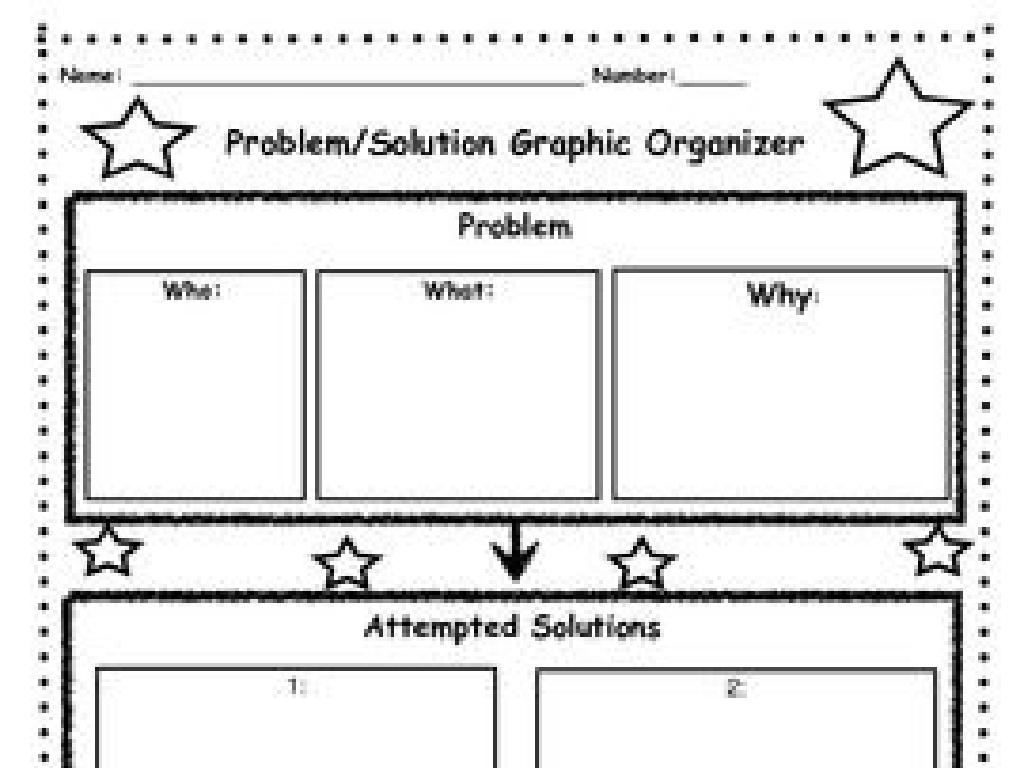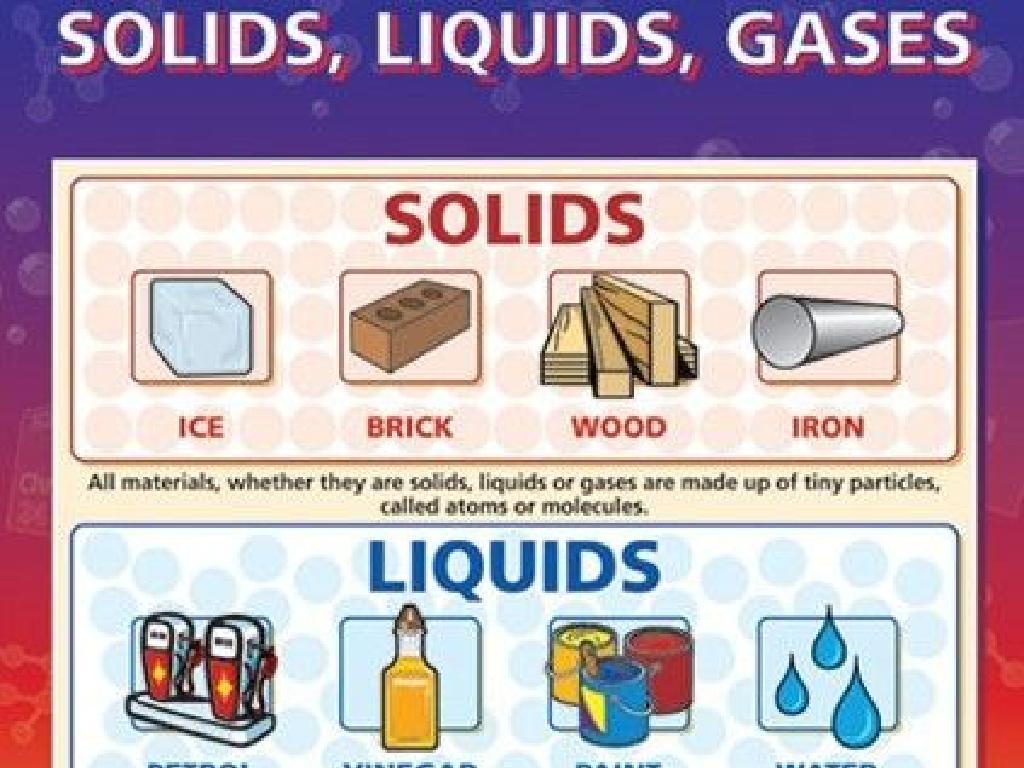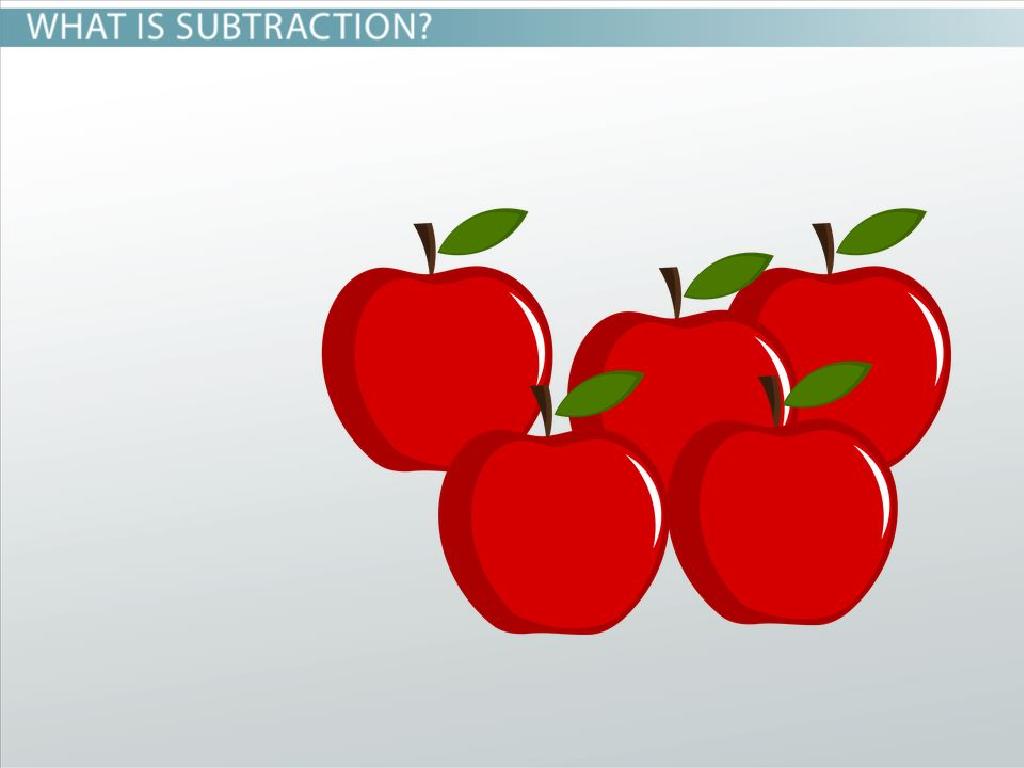Parallel, Perpendicular, And Intersecting Lines
Subject: Math
Grade: Fourth grade
Topic: Lines And Angles
Please LOG IN to download the presentation. Access is available to registered users only.
View More Content
Exploring Lines and Angles
– Discover parallel lines
– Lines that never meet, like railroad tracks
– Learn about perpendicular lines
– Lines that meet at a right angle, like the edges of a book
– Find intersecting lines
– Lines that cross each other, like letter ‘X’
– Geometry in our world
– Look around; lines and angles form our environment
|
This slide introduces students to the fundamental concepts of geometry focusing on parallel, perpendicular, and intersecting lines. Start by explaining that parallel lines are always the same distance apart and never meet, using the example of railroad tracks. Perpendicular lines intersect at a 90-degree angle, which can be illustrated by the corners of a book or a box. Intersecting lines cross each other at any angle, like the letter ‘X’. Encourage students to observe their surroundings and identify these types of lines and angles in the classroom, at home, or outside. This real-world connection will help them understand the relevance and ubiquity of geometry in their daily lives.
Exploring Lines in Geometry
– Lines are straight paths
– No curves or thickness, like a pencil mark
– Lines extend endlessly
– Imagine them going on forever, both ways
– Lines represent real-life objects
– Like edges of a book or a ruler
– Understanding lines in geometry
|
This slide introduces the concept of lines in geometry, which is fundamental for understanding shapes and space. Emphasize that lines are perfectly straight and have no thickness, making them different from line segments or rays. Highlight that lines are infinite; they don’t have a start or an end point. Use everyday objects like the edge of a book, a stretched string, or the sides of a ruler to illustrate lines in the real world. This will help students visualize and grasp the abstract concept of lines extending in both directions without end. Encourage students to think of other examples of straight objects that can be represented by lines.
Meet the Lines Family
– Parallel lines never meet
– Think of train tracks, always side by side
– Perpendicular lines form a right angle
– The letter ‘L’ is like perpendicular lines
– Intersecting lines cross each other
– Roads crossing at a traffic light
– Exploring lines in shapes and spaces
|
This slide introduces students to the concept of different types of lines. Parallel lines are always the same distance apart and do not meet, similar to train tracks. Perpendicular lines meet at a right angle, which is 90 degrees, like the corners of a piece of paper or the letter ‘L’. Intersecting lines cross each other at any angle, like roads at an intersection. Use everyday examples to help students visualize these concepts. Encourage them to find examples of each type of line in the classroom or at home. This will help them understand how these lines appear in different shapes and spaces.
Parallel Lines in Action
– Parallel lines are everywhere
– They’re like railroad tracks
– They run next to each other but never meet
– Opposite edges of a notebook
– Just like the lines on your notebook, always the same distance apart
– Find parallels in the classroom
– Look around to spot examples of parallel lines in our own classroom
|
This slide introduces the concept of parallel lines to fourth-grade students by relating it to familiar objects. Start by explaining that parallel lines are lines in a plane that are always the same distance apart and never meet, no matter how far they are extended. Use the analogy of railroad tracks and the edges of a notebook to help students visualize parallel lines. Then, engage the students by asking them to find examples of parallel lines in the classroom, such as the sides of desks, shelves, or floor tiles. This activity will help them understand the concept and recognize parallel lines in their everyday environment. Encourage them to think creatively and share their findings with the class.
Perpendicular Lines in Action
– Perpendicular lines form ‘T’
– Imagine the letter ‘T’, where two lines meet at a 90-degree angle
– They create a square corner
– Like the corners of a square or rectangle
– See this in books and streets
– Edges of a book or where two streets meet at a right angle
– Perpendicular lines are everywhere
|
This slide introduces students to the concept of perpendicular lines, which are a pair of lines that intersect at a right angle (90 degrees). Use everyday examples to help students recognize these lines in the world around them. Show them that the edges of a book or the way streets intersect can illustrate perpendicular lines. Encourage students to look for other examples in the classroom or at home. This will help them understand that math is not just in textbooks but is a part of their daily lives. You can use a square or a rectangle to show the square corners formed by perpendicular lines. Ask students to draw perpendicular lines and identify them in different objects.
Intersecting Lines in Action
– Intersecting lines form an ‘X’
– They cross at non-90 degree angles
– Example: The letter ‘X’
– Two lines meet to make the shape of ‘X’
– Example: Open scissors
– Like two blades meet when scissors are open
|
This slide introduces the concept of intersecting lines to fourth-grade students. Intersecting lines are defined as lines that cross each other at any angle other than 90 degrees. To help students visualize, use everyday examples such as the letter ‘X’ and a pair of open scissors. These examples are relatable and help solidify the concept in young minds. During the presentation, encourage students to draw their own intersecting lines and identify intersecting lines in the classroom or their homes. This will help them recognize these lines in various environments and understand that geometry is a part of their daily lives.
Let’s Draw: Lines and Angles
– Draw parallel lines with a ruler
– Parallel lines run side by side, never touching
– Draw perpendicular lines
– Perpendicular lines meet at a 90-degree angle
– Draw intersecting lines
– Intersecting lines cross each other at any angle
– Label each type of line
|
This activity is designed to help students understand the concepts of parallel, perpendicular, and intersecting lines by drawing them. Provide rulers to ensure the lines are straight. Explain that parallel lines are like train tracks that never meet, while perpendicular lines meet at a right angle, like the corners of a book. Intersecting lines cross each other at any angle, like the letter ‘X’. Encourage students to draw each type of line and label them correctly. This hands-on activity will reinforce their understanding of the different types of lines and how they relate to each other.
Finding Lines Around Us
– Search for lines in the classroom
– Look for parallel, perpendicular, and intersecting lines
– Discuss findings with a classmate
– Talk about where you see each type of line
– Share discoveries with the class
– Understand lines in our environment
– See how lines form shapes and patterns around us
|
This activity is designed to help students recognize and understand parallel, perpendicular, and intersecting lines in their immediate surroundings. Encourage the students to look at the edges of books, walls, floor tiles, and windows to find real-world examples of these lines. They should discuss their observations with a peer to reinforce their understanding. After the discussion, each pair will have the opportunity to share their findings with the class, fostering a collaborative learning environment. As a teacher, facilitate the sharing process and guide the students to see how these lines are part of larger geometric shapes and patterns in the world around them. This will help them visualize and better grasp the concepts being taught.
Class Activity: Line Detectives
– Become a Line Detective
– Find and draw lines on objects
– Look for parallel, perpendicular, or intersecting lines on classroom objects
– Record your findings
– Sketch the objects and lines in your notebook
– Present to the class
– Share your discoveries with your classmates
|
This activity is designed to help students identify and understand parallel, perpendicular, and intersecting lines in a fun and interactive way. Encourage the students to explore the classroom and find real-life examples of these lines. They should draw these objects in their notebooks, making sure to highlight the specific lines they find. After the activity, have each student present their findings to the class, explaining how they identified the lines. This will reinforce their learning and improve their presentation skills. Possible objects could include the edges of books (parallel), the corner of a desk (perpendicular), or the point where two window panes meet (intersecting).
Review and Quiz Time on Lines and Angles!
– Recap: Parallel, Perpendicular, Intersecting
– Parallel lines never meet, perpendicular lines form a right angle, intersecting lines cross each other
– Take a fun quiz to test what you’ve learned
– Questions will cover definitions, examples, and identifying lines
– Every answer teaches us something new
– No pressure, just discovery!
|
This slide is designed to review and assess students’ understanding of parallel, perpendicular, and intersecting lines. Begin by recapping the key characteristics of each type of line. Then, move on to a short, interactive quiz to make the review session engaging. Emphasize that the purpose of the quiz is not just to get the right answers, but to learn and discover new things. Encourage students to participate without fear of making mistakes, as each question they tackle is an opportunity to solidify their understanding. Provide positive feedback and clarify any misconceptions that arise during the quiz.
Conclusion & Homework: Line Explorers
– Celebrate your hard work today
– Homework: Find & draw line types
– Look around your house or neighborhood
– Three examples of each line
– Parallel, perpendicular, intersecting lines
– Share your drawings next class
|
Great job today, students! You’ve learned about parallel, perpendicular, and intersecting lines. For homework, I want you to be detectives in your own home or neighborhood. Find and draw three examples of each type of line. This will help reinforce what you’ve learned and give you a chance to see these concepts in the real world. Remember, parallel lines never meet, perpendicular lines form right angles, and intersecting lines cross each other. Bring your drawings to the next class so we can discuss and celebrate your discoveries!






